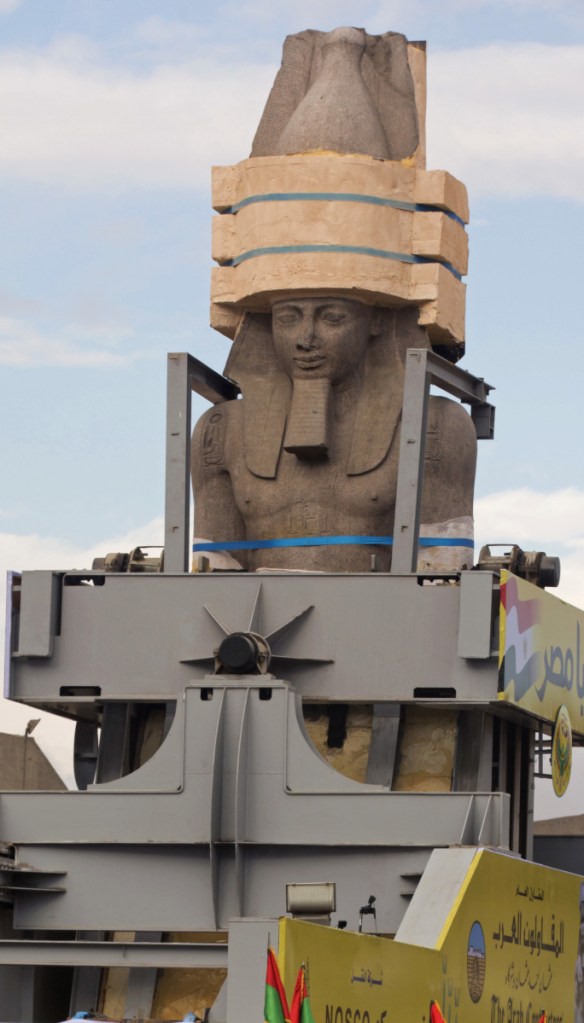CAIRO — With much fanfare, Egypt on Thursday placed the ancient statue of one of its most famous pharaohs, Ramses II, in the entrance hall of a new antiquities’ museum under construction near the pyramids of Giza, just outside Cairo.
This was the fourth time the statue, which dates back 3,300 years, had been moved. It was first discovered in 1820 near ancient Memphis by Giovanni Battista Caviglia, an Italian explorer and Egyptologist who was also a key figure in the excavation of the Sphinx of Giza.
Ramses II, also known as Ramses the Great, ruled Egypt for around 60 years, from 1279 B.C. to 1213 B.C. He is credited with expanding ancient Egypt’s reach as far as modern Syria to the east and modern Sudan to the south.
The placement of the colossus, weighing over 80 tons and towering at a height of about 39 feet, took place amid a ceremony attended by Egyptian officials and foreign diplomats.
The massive statue – which for over 50 years graced the Ramsis Square, named after the statue, in downtown Cairo – was moved in an iron cage hung like a pendulum on a steel bridge for about 400 yards from where it stood earlier, at the museum compound.
“We are celebrating the arrival of the first artifact to its final venue in the atrium of the Grand Egyptian Museum,” Antiquities Minister Khaled al-Anani said, referring to the colossus.
Al-Anani said the museum entrance hall will also host some 87 other artifacts, including 43 massive statues.
Send questions/comments to the editors.



Success. Please wait for the page to reload. If the page does not reload within 5 seconds, please refresh the page.
Enter your email and password to access comments.
Hi, to comment on stories you must . This profile is in addition to your subscription and website login.
Already have a commenting profile? .
Invalid username/password.
Please check your email to confirm and complete your registration.
Only subscribers are eligible to post comments. Please subscribe or login first for digital access. Here’s why.
Use the form below to reset your password. When you've submitted your account email, we will send an email with a reset code.